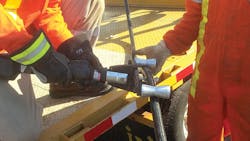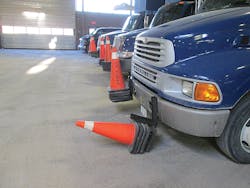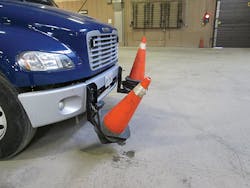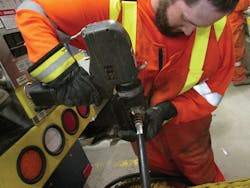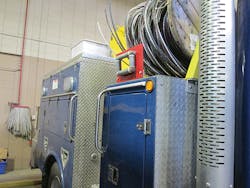Ergonomics Programs Drive Down Injury Rates
To help combat the number of painful on-the-job injuries related to musculoskeletal disorders (MSDs), Kitchener-Wilmot Hydro and five other utilities in Ontario, Canada, partnered with the Institute for Work & Health (IWH) nine years ago. Due in part to the ergonomics programs implemented at these utilities, the number of injuries to muscles, tendons and other soft tissues has declined in Ontario, according to a recent report.
In the summer of 2005, Kitchener-Wilmot worked with IWH, the Infrastructure Health & Safety Association (IHSA) and the Centre for Research Expertise in the Prevention of Musculoskeletal Disorders to implement a participatory ergonomics program. Today, the ergonomics program is still going strong at the utility and, as a result, the amount of reported soft tissue injuries has decreased.
According to IWH, the five other participating Canadian utilities — including Ottawa, Thunder Bay, Kingston, Waterloo North, and the Hamilton/St. Catharine’s region — also reduced symptoms, injuries, compensation claims and lost workdays through the program.
Ergonomics Change Team
At the suggestion of IHSA, Kitchener-Wilmot created an ergonomics change team (ECT) representing different departments within the organization. The ECT included power line technicians (PLTs), a member of senior staff, a crew foreman, a cable locator, two office employees, an engineering supervisor and an employee from the purchasing department.
In November 2005, IHSA offered a three-day training session to the ECTs from Kitchener-Wilmot and Guelph Hydro. During the first two days, the team members learned about soft tissue injuries, how to fit work to the worker and how to get the most bang for the buck from an ergonomics program by making good purchases on new equipment and choosing cost-effective changes.
On the final day of the training session, the utilities’ ECTs met to discuss issues such as office chairs, tools, trucks and how the team would operate. The program then started following the participative ergonomic blueprint, developed by researchers at the University of Waterloo and IWH. To get a jump-start, the safety manager brought in Jan Mutter, the head of the only surviving ECT from a previous research project. The overall message was to simplify the program and add a degree of practicality.
To determine the scope of soft-tissue issues at Kitchener-Wilmot, the researchers asked employees about physical demands in their jobs, any pain or discomfort they were experiencing, as well as how MSDs may be limiting their ability to work. As a result, Kitchener-Wilmot’s ECT learned there were soft-tissue concerns across the utility.
The researchers surveyed the employees again nine months and 18 months after the program began to check for any changes or improvements. In addition, they reviewed records of first-aid reports, injuries, compensation claims and modified work from three years before the ergonomics program began and then two years after it was implemented.
Investing in Ergonomic Tools
While Kitchener-Wilmot has implemented a large number of changes as a result of the participatory ergonomics program over the last nine years, one of the key ways it has been able to drive down the number of MSDs is through the purchase of hydraulic and electric power tools. When the utility first started the ergonomics program, its PLTs were still using a lot of manual tools such as cutters and presses in the field.
The utility now applies ergonomic principles when buying new tools such as presses, cutters, cable benders and impact wrenches. Trial units are purchased through the safety budget and rotated through to the crews and service trucks. After trying out the tools in the field, PLTs give feedback to the crew foreman. If PLTs save time and labor with the tool, then the foremen requests the new tools though the tool budget.
Some of the trials have been done without cost; for the other trials, the utility invested in only a few of the expensive tools. That way, if the tool was shown to be ineffective in the field, the utility could limit its losses. While not all trial units have been successful, most of the tools have helped with ergonomics. For interchangeability, Kitchener-Wilmot has standardized on primarily one brand of tool while keeping the door open to new and improved ideas.
Reducing Manual Lifting
In addition to purchasing new tools for its field crews, Kitchener-Wilmot also focused on reducing the amount of unnecessary manual lifting required by its PLTs. The utility now labels heavier items to remind workers to not lift them alone or to use a machine lift.
The utility also changed its work practice concerning the shorter P-lines or spider ropes on reels, which are 165 lbs completely dry. When soaked with water, they were lifted by two workers, which was not an acceptable risk. To reduce the amount of back strain on workers, the utility brought in a stacker that could be used to lift the ropes quickly onto a pickup truck in the shop.
In the field, PLTs can now use radial boom derricks, material-handling aerial devices or boom trucks with a lifting eye to move the P-lines around or hang them on a pole. In addition, Kitchener-Wilmot followed Guelph Hydro’s practice of installing a battery-operated crane on its tension stringer, which is where the final lift is typically done.
Customizing Trucks
The purchase of new large trucks is another way the utility has been able to improve ergonomics. Members of the ECT provide input on the specifications and final design of new trucks. Then, before delivery, they ensure the handrails are positioned for easy access and specifications are met. New trucks are equipped with air-ride seats; some have air-ride cabs and some service trucks, in particular, have extended cabs to allow for better seat adjustment and storage.
Rollers are used for extension ladders, reel stands and cable pulling to prevent the recurrence of strain injuries. For example, a new underground service truck included easier-moving reel stands, which workers could feed through a fairlead with rollers. On the same truck, workers used to lift a 35-lb propane tank in and out of a trench in mud and snow many times a day to use on heat-shrink sleeves. Now the tank stays on the vehicles and a retractable hose is used to take the torch to the trench, reducing the manual handling required.
Focusing on Stretching
Not only reducing manual lifting, but also implementing a stretching program has helped PLTs to stay safe in the field. Kitchener-Wilmot participated in a stretching study with Waterloo North Hydro and Guelph Hydro, and the utilities have scientifically proven the benefits of stretching.
Because stretching alone before an activity reduces a person’s chance for injury by 50% and improves flexibility, workers are offered a few minutes first thing in the morning to warm up their large muscle groups. Field workers meet for a voluntary stretch session at 7 a.m. in the auditorium, and office employees stretch at 8:30 a.m. in the conference room.
Changing Work Positions
Because of the nature of their work, PLTs often put themselves at risk for MSDs through various factors. To confront this issue, Kitchener-Wilmot conducts ergonomic training sessions with all field staff members and supervisors.
The utility analyzed several common tasks such as when a worker pulls up an overhead service from a bucket. This included showing the effects of a task on a worker’s body from a modeling program called WATBAK, used by the IHSA. The utility discovered pulling up even light overhead services put workers at significant risk for injury. For that reason, they must now use a rope method in which they can pull a heavy overhead service up from the ground rather than pulling up with one arm in the bucket, and then secure it with the other.
Sharing Best Practices
Kitchener-Wilmot and several other utilities in the province have implemented ergonomic changes. Each year, 10 different utilities get together for a symposium hosted by the IHSA, where they can exchange ideas about projects they are working on and share their success stories.
If a work practice or tool works well for one utility, the other utilities often consider adopting it because they all have the same goal: to protect their workforce. By working together, the utilities in Ontario are able to reduce the number of injuries in the field and prevent MSDs from hindering a PLT’s ability to keep the power on for customers.
George Minow ([email protected]) is the manager of health, safety and wellness for Kitchener-Wilmot Hydro Inc. in Kitchener, Ontario, Canada. He is a certified engineering technologist in the electrical discipline and a Canadian registered safety professional. He has been with the utility for 13 years. In his current position, he is responsible for training, education, rule interpretation, health and wellness.
Mentioned in this article:
Guelph Hydro | www.guelphhydro.com
Infrastructure Health & Safety Association | www.ihsa.ca
Institute for Work & Health | www.iwh.on.ca
Kitchener-Wilmot Hydro | www.kwhydro.ca
Waterloo North Hydro | www.wnhydro.com
Sidebar: Work-Related Injuries Decline in Ontario
The Institute for Work & Health (IWH) tracked the number of work-related MSDs and other work injuries between 2004 and 2011 in Ontario, Canada. In a study released in the Occupational and Environmental Medicine journal, the independent research association looked at three different sources of information. All three showed a steady decline in the number of MSDs and other injuries over an eight-year period. Here are some highlights from the recent study:
• Over the past 10 years in Ontario, sprains and strains have consistently been the leading type of work injury, representing 40% of all lost-time claims in the province in 2013, according to the Workplace Safety and Insurance Board 2013 statistical report.
• The study suggests efforts to prevent MSDs are proving to be as effective as efforts to prevent traumatic work-related injuries, according to the president of the IWH.
• Workers’ compensation lost-time claim records show a 48.2% decline in non-traumatic work-related MSDs and a 39.4% decline in traumatic work-related injuries.
• Emergency department treatment records show a 16.3% decline in MSDs and a 30.2% decline in other work injuries.
• A Statistics Canada national health survey shows a 40.7% decline in MSDs and 45.1% decline in other work injuries.
